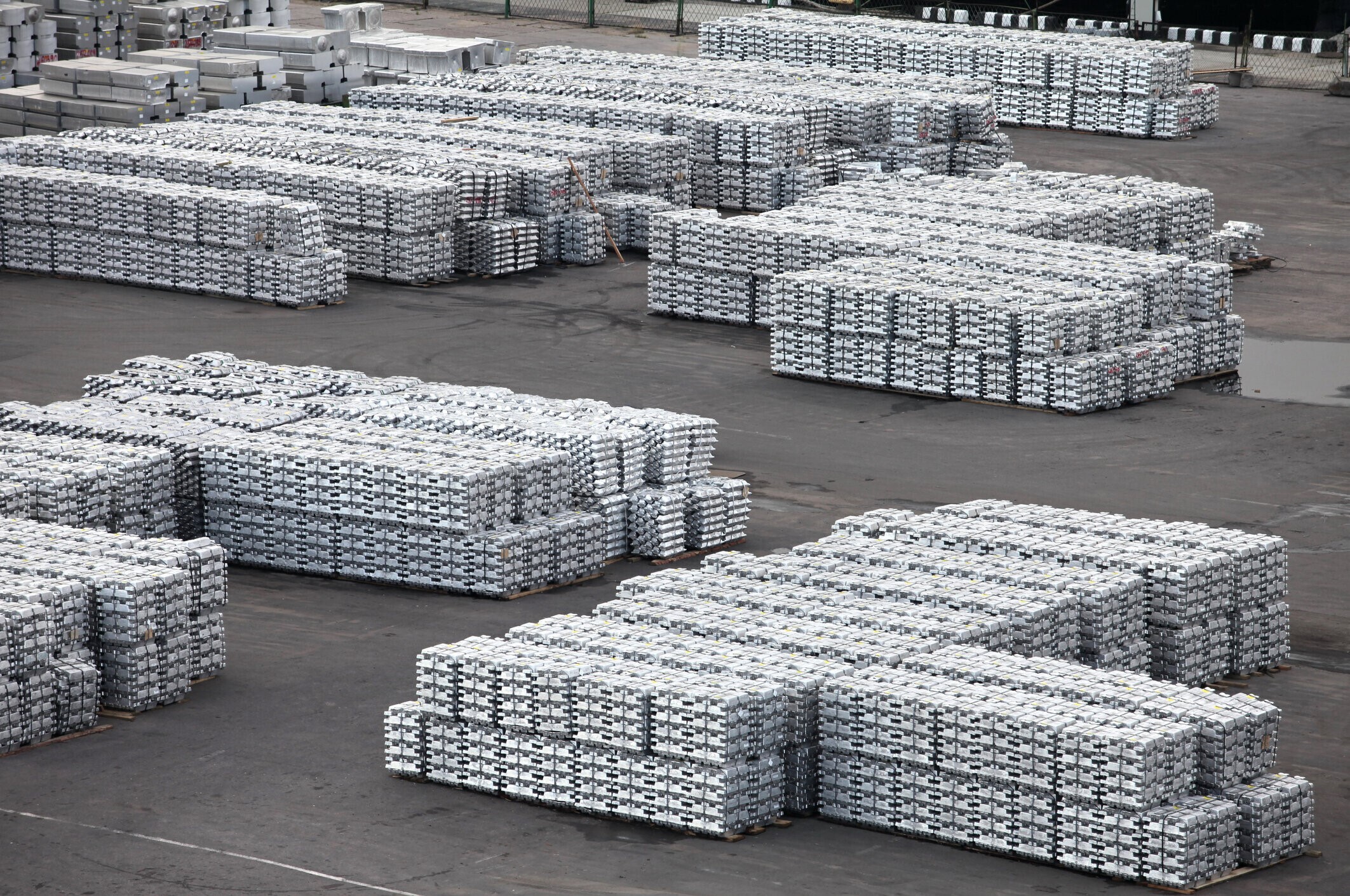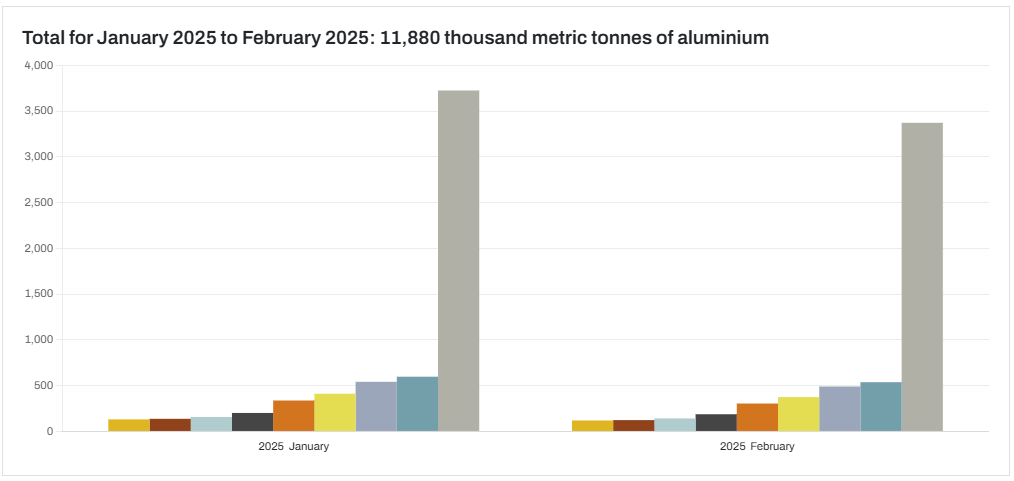

In the first two months of 2025, the world's primary aluminium production represented a year-on-year increase of 0.85 per cent, amounting to 11.88 million tonnes, which was significantly offset by declines M-o-M, according to the International Aluminium Institute's data. Following January when the world output was 6.235 million tonnes, slightly down by 0.30 per cent from 6.254 million tonnes, the production in February reached 5.645 million tonnes, further down by 9.46 per cent M-o-M. Fewer operation days likely contributed to the decline, even though daily production slightly increased from 201,100 tonnes in January to 201,600 tonnes.

Alongside, reduced output in some of the primary aluminium-producing regions played a critical role in the overall drop for February. Even on a year-on-year basis, the output in February 2025 recorded a downfall of 0.86 per cent from 5.694 million tonnes.
Which countries/regions contributed to the output decline in February?
In February 2025, all major primary aluminium-producing countries and regions, including China, the world's largest aluminium producer, contributed to the global decline in aluminium output. The decrease in production across these regions ranged between 9 per cent and 10 per cent, which averaged out to a 9.46 per cent month-on-month drop.
Africa experienced the highest decline, with a 10.22 per cent fall rate in production, from 137,000 tonnes in January to 123,000 tonnes in February. Oceania followed closely, with a 10.19 per cent plunge from 157,000 tonnes to 141,000 tonnes. In Europe (including Russia), primary aluminium production slumped by 10.05 per cent, from 597,000 tonnes in January to 537,000 tonnes in February.
 Image source: International Aluminium Institute (IAI)
Image source: International Aluminium Institute (IAI)
 Events
Events
 e-Magazines
e-Magazines
 Reports
Reports



Responses






